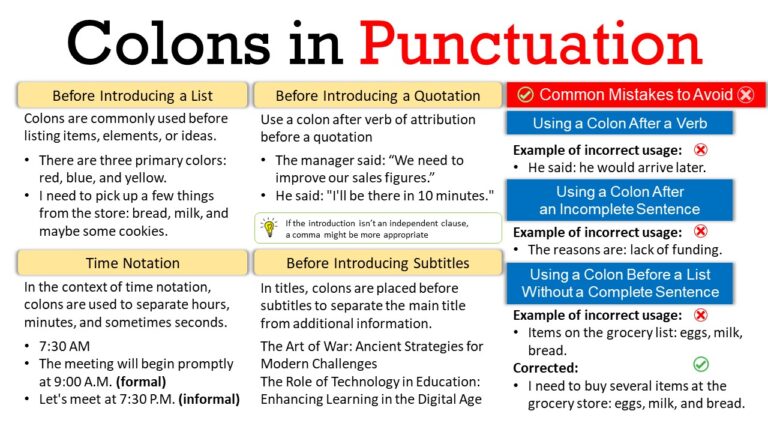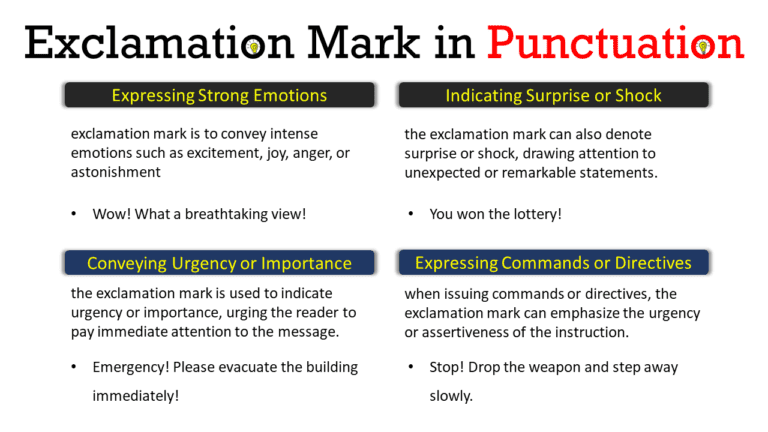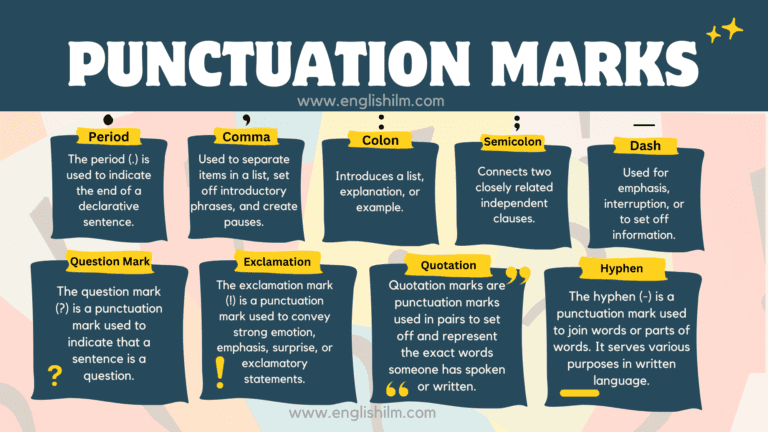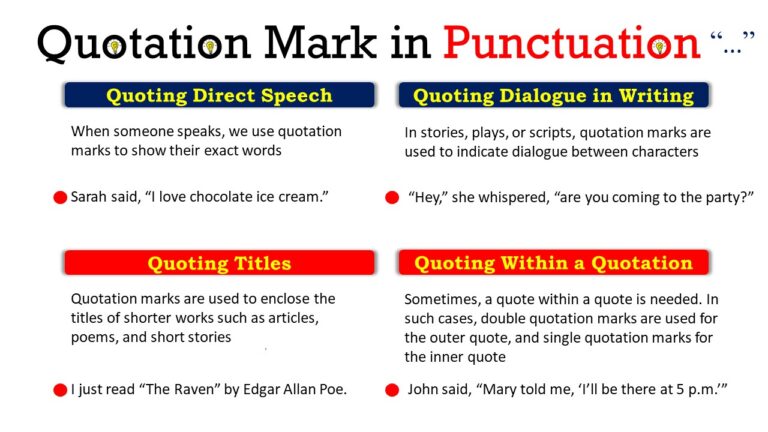In this blog post, you will learn about the semicolon, a punctuation mark that connects closely related ideas in writing. Often misunderstood, the semicolon can make your sentences clearer and more polished when used correctly. Master the rules and examples provided to improve your writing skills and make your text flow smoothly.
What is a Semicolon?
One way to use the semicolon, a punctuation mark, is to connect two different phrases that are closely related. It shows a pause that’s stronger than a comma but not as strong as a period; it’s somewhere in the middle. Basically, it shows that two separate phrases have something in common.
Rules for Using Semicolons
Semicolons work a bit like gentle periods because they can join two “sentences” together.
For example:
- “Never argue with someone unattractive; they don’t have much to lose.” (A semicolon makes the change smoother than a period.)
Semicolons are also a bit like strong commas because they can split up items in a list (especially when those items already have commas).
For example:
- “I’ll reach out to Matt, who bakes; Simon, the butcher; and Janet, the lawyer.” (See how the list items have commas already, like “Matt, the baker.”)
1. Connecting Independent Clauses:
When two independent sentences with similar substance or themes are joined without the use of a coordinating conjunction (such as “and,” “but,” “or,” etc.), the semicolon is most frequently used.
Example:
- He enjoyed playing tennis; she preferred swimming.
- The cat slept peacefully; the dog barked loudly.
- The sky was ablaze with hues of orange and pink; the sun was setting behind the mountains.
- The city was bustling with activity; however, she found solace in its chaos.
- He had always dreamed of traveling the world; now, he was finally setting off on his adventure.
Read more about: Conjunction Words
2. Linking Items in a Series:
In order to prevent confusion, semicolons can also be used to divide items in a list when the items themselves contain commas.
Example:
- I like pizza; pasta; and salads.
- He’s a teacher; she’s a doctor.
- The conference featured speakers from various fields: Dr. Smith, a renowned psychologist; Professor Johnson, an expert in economics; and Dr. Lee, a pioneer in artificial intelligence.
- The bookstore sold a variety of genres: mystery, suspense; romance, drama; and science fiction, fantasy.
Read more about: Comma in Punctuation
3. Clarifying Complex Lists:
In complex lists where commas are already used, semicolons can provide additional clarity.
Example:
- The ingredients for the recipe included flour, sifted; sugar, brown or white; eggs, beaten; and milk, warmed.
- The team had members from different departments: marketing, sales; research, development, finance, and administration.
4. Transitioning Between Sentences:
Semicolons can be used to transition between sentences that are closely related thematically, providing a smoother flow than starting a new sentence.
Example:
- She loved to hike in the mountains; the tranquility of nature always brought her peace of mind.
- The concert was a breathtaking experience; the music resonated deep within her soul.
Colon vs. Semicolon
Here’s a given table where we will explore the differences between a colon and a semicolon in English with their usage, rules, and examples:
| Colon | Semicolon |
|---|---|
| Used to introduce a list, explanation, or quotation | Used to connect closely related independent clauses |
| It comes before the explanation or list | It comes between two complete sentences |
| No pause after it | Slightly stronger pause than a comma, but not as strong as a period |
| Example: Please bring the following: apples, oranges, and bananas. | Example: She loves reading novels; adventure stories are her favorites. |
Read more about: Colon in Punctuation
Semicolon in Punctuation Infographics
Read More








